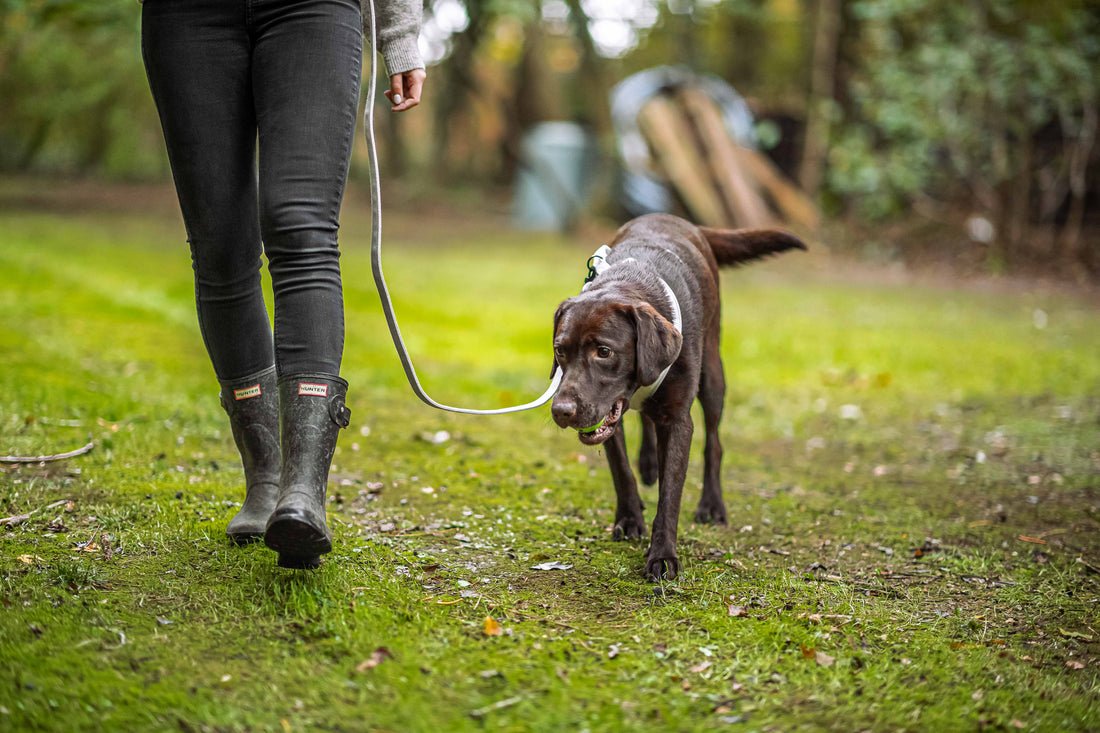
How to Stop Your Dog from Pulling on the Lead
One of the most common struggles for dog owners is dealing with a dog that pulls on the lead during walks.
Not only does this make walks more stressful, but it can also lead to discomfort for both you and your dog.
The good news is, with the right approach, you can teach your dog to walk calmly by your side, making walks more enjoyable for both of you. Here’s how to stop your dog from pulling on the lead.
🐶 Why Do Dogs Pull on the Lead?
Before we dive into training tips, it’s important to understand why dogs pull in the first place.
Dogs are naturally curious creatures, and when they’re out on a walk, they’re often excited by the sights, smells, and sounds around them. Pulling is their way of getting to those new and exciting things faster.
However, when a dog pulls on the lead, it can cause tension, discomfort, and even injury.
It also becomes a habit that, if left unchecked, is hard to break. Luckily, with patience and consistent training, you can teach your dog to walk calmly by your side.
🛠️ Training Techniques to Stop Lead Pulling
1. The Power of Patience: Stop and Wait
One of the simplest, yet most effective techniques is to stop walking when your dog pulls on the lead.
When they start pulling, immediately stop and stand still. Wait for your dog to loosen the tension on the lead. Once the lead is slack, you can begin walking again.
This method teaches your dog that pulling doesn’t get them anywhere. They’ll soon learn that walking calmly by your side is the best way to move forward.
2. Change Direction for Better Focus
If your dog is pulling ahead, try changing direction unexpectedly. Turn around and walk in the opposite direction. This surprise move grabs your dog’s attention and helps them refocus on you.
It also stops them from pulling and encourages them to pay attention to your movements. As they become more aware of your direction, they’ll stop tugging ahead.
3. Reward Calm Behaviour
Always reward your dog when they walk beside you without pulling. Carry some treats during your walks and offer them when your dog walks calmly.
Positive reinforcement is key to building good habits. When your dog understands that walking without pulling leads to rewards, they’ll be more likely to repeat this behaviour.
4. Consider a No-Pull Harness
Using a no-pull harness can be a game-changer for many dogs. These harnesses are designed to discourage pulling and provide you with more control over your dog’s movements.
It’s essential that the harness fits properly and is comfortable for your dog. A well-fitted harness can make walks more enjoyable for both you and your pet.
🐕 Additional Tips for Success
- Consistency is Key: To successfully teach your dog not to pull, you must be consistent. Apply the same training methods every time you go for a walk.
- Stay Calm and Positive: Your dog can sense your emotions. If you stay calm and relaxed, they’re more likely to mirror your behaviour.
- Frequent Practice: Short, frequent training sessions are more effective than long, occasional ones. Keep walks fun and engaging for your dog.
- Start Slow: Begin training in a quiet area before progressing to busier, more distracting environments.
🛍️ Shop the Best Harnesses at Waggs and Kisses
If you’re looking for a comfortable and effective harness for your dog, Waggs and Kisses offers a selection of high-quality, no-pull harnesses.
Our collection is designed to make walks more enjoyable for both you and your dog. Visit us to find the perfect fit for your furry friend.
🏁 Final Thoughts
Stopping your dog from pulling on the lead doesn’t have to be a frustrating experience.
With patience, consistency, and the right training techniques, you can teach your dog to walk calmly by your side.
Remember, positive reinforcement and a no-pull harness can go a long way in making walks more enjoyable for both you and your dog.
